Despite our house being a fairly new house, we’ve had some issues with our furnace for the past few years. The problems have always been intermittent, but happen at the worst possible times. As in, the colder it is outside, the less likely it would be that the furnace would turn on.
During last year’s polar vortex, I nearly broke down and called in an HVAC specialist to fix our furnace when we woke up one morning to a 55 degree house. But that same morning the furnace then came on and warmed us back up to a comfortable 70 degrees, so I let it go. If I didn’t have to spend a fortune on a repair, I wasn’t going to. (Yes, I’m cheap.)
Part of the reason I refused to call someone in is that, unlike the furnace, our gas fireplace has worked reliably. So even on days when the furnace wouldn’t come on more than once a day, the gas fireplace could keep the living room tolerably warm on its own during the day. Honestly, during the winter our gas fireplace is on for the entire day most days. We’ve found that it actually saves us money to keep it on. If the fireplace could get us through the most temperamental days of the furnace, we’d be fine.
This year, though, the furnace had been ignoring the thermostat more than usual. I knew it wasn’t the thermostat causing the problem – we had that replaced just four years ago, and in those cases the furnace wasn’t even trying to activate. In this case, the furnace would give it a try, the burners would ignite, and then it would shut off a couple of seconds later. This would happen 3-4 times in a row, and then the furnace would give up and stop trying.
So I recently found myself in the position of needing to call someone for a repair, or figure it out on my own. Google to the rescue!
After some searching, the leading theory was that the flame sensor was dirty and needed cleaned or replaced. The flame sensor detects if the burners actually ignite. If the sensor can’t tell if the burners ignited, it’ll shut everything down instead of risking gas flowing freely without a controlled flame burning it.
That explained all of the symptoms, but how in the world could I clean the sensor? I read a few guides, but they just weren’t thorough enough for me to feel comfortable with what I was doing. So I turned to my next DIY helper: YouTube.
I can’t begin to say how thankful I am for the folks who post YouTube videos of how to fix stuff around the house. They saved us when we needed to replace a leaky part of our kitchen sink a few years ago, they helped us learn how to snake our our toilet when a certain little kid used too much toilet paper, and they have now helped me repair my furnace. After watching two videos about the process, I felt comfortable giving it a try. (With Aaron as my backup.)
So, if you’re ever wondering how to clean the flame sensor so your furnace will turn on and stay on, let me show you how to do it:
Step 1: Turn off the electricity to the furnace. Important step here when you’re inserting metal screwdrivers deep into your furnace.
Step 2: Remove the cover of your furnace and find the burners.
Step 3: Locate the flame sensor. It’s usually a thin metal rod sticking up in front of one of the burners.
Step 4: Figure out where the sensor is attached. It usually has a screw holding it in, requiring a screwdriver. Or, in our case, an itty-bitty socket wrench. Ours was attached above the burners, but yours might be attached underneath.
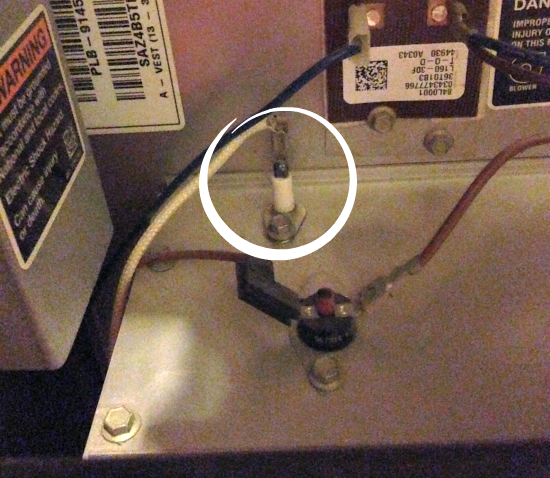 I circled ours – it attached from above the burners.
I circled ours – it attached from above the burners.
Step 5: Carefully remove the flame sensor after loosening the screw holding it. Don’t touch the metal part – the oils on your hands can damage it! See all that black and white stuff on the sensor? That soot is what was keeping it from sensing the flame properly.
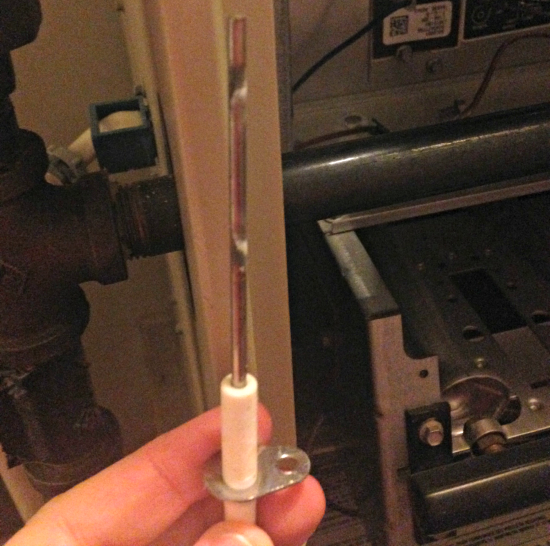 It doesn’t seem like much, but it’s enough to keep the furnace from working.
It doesn’t seem like much, but it’s enough to keep the furnace from working.
Step 6: Gently clean the sensor. Videos and written guides recommended a very, very fine grain sandpaper, soft steel wool, paper, or anything that isn’t too rough. The best suggestion I saw was using a dollar bill – it’s just abrasive enough to clean the sensor without damaging it. I used a crisp bill to clean ours. You won’t be able to get all of the black scorch marks off of it, and that’s okay. You’re only concerned with getting any loose debris off of it.
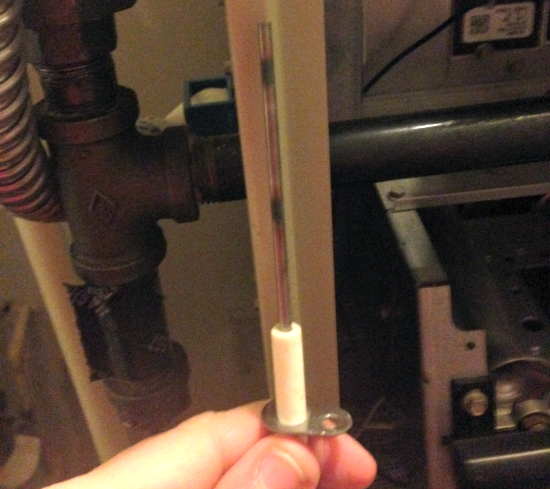 It’s cleaner, even if it doesn’t look that different.
It’s cleaner, even if it doesn’t look that different.
Step 7: Carefully put the flame sensor back in place and secure it with the screw. Basically, reverse everything you did to get it out.
Step 8: Flip the switch at the circuit breaker box to power on the furnace again. Leave the cover off (if your furnace allows it) so you can check if everything is working. If all goes well, the gas will begin to flow, the burners will ignite, and they’ll stay on this time. If it’s all working well, replace the cover, pat yourself on the back, and go enjoy a warm house.
If it doesn’t work, you might need to replace the sensor. I’m told this is a cheap part that you can find at any hardware store, and is nearly as easy to replace. In our case, cleaning it worked just fine.
Since cleaning it, we haven’t had any issues at all with the furnace. I’m still not very handy, but thanks to the internet I can do a great job at faking it some of the time!
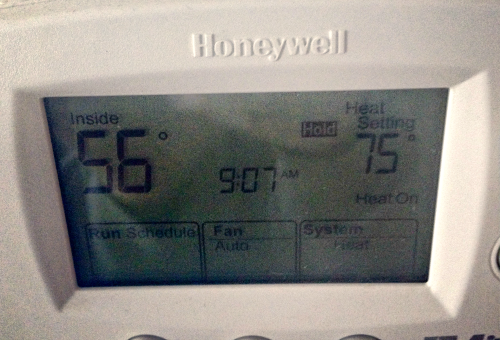
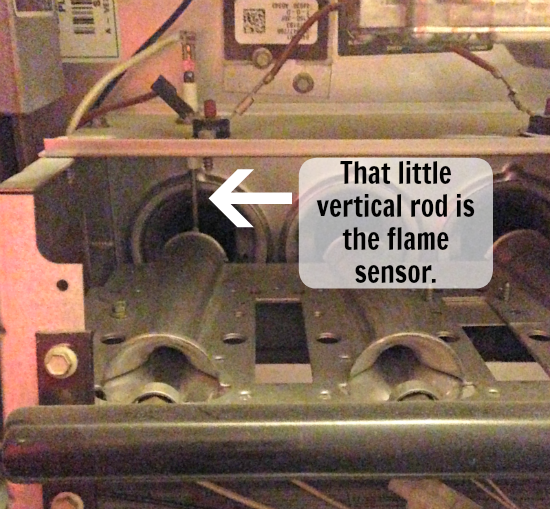
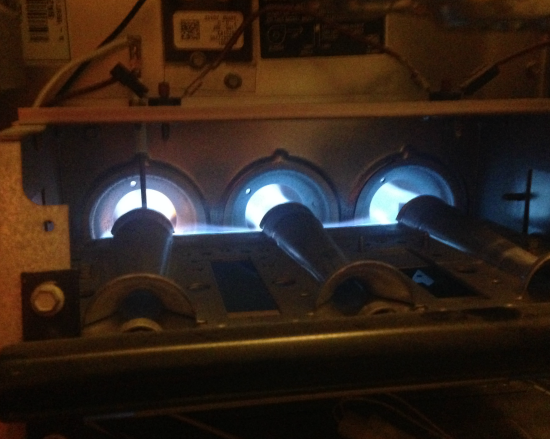


Wow – you are so resourceful! I probably would have just called the heating guy and called it a day. This is such a wonderful way to learn about your own heating system and save some $$!
I think I would’ve bottled it and called in the professionals! Good work sticking to it though and I’m happy to hear you home is now nice and warm. Winter is nearly over folks, thank goodness!